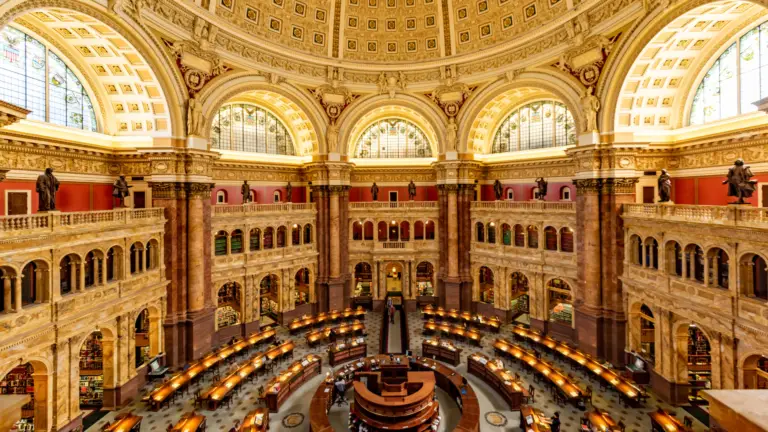THE LIBRARY OF CONGRESS
The Library of Congress, located in Washington D.C., is an architectural gem and a true sanctuary for the preservation of knowledge. Considered the largest research library in the world, this impressive neoclassical building houses a vast collection of books, manuscripts, and other historical and cultural materials that reflect the intellectual wealth of the United States. We will explore fascinating facts, history, and the construction process of this library marvel.
The history of the Library of Congress
The history of the Library of Congress dates back to 1800 when President John Adams signed a law to establish a library for the United States Congress. In its early days, the library had a modest collection of books and maps housed in the Capitol. However, in 1814, during the War of 1812, the Capitol building was set ablaze by British troops, destroying a significant portion of the collection.
After the fire, Congress acquired the private collection of former President Thomas Jefferson, which consisted of over 6,000 volumes. This event marked a significant milestone in the library’s history and laid the foundation for its growth and development. Over the years, the library has continued to expand and acquire valuable materials through donations, purchases, and exchanges with other libraries and institutions worldwide.
The construction process of the Library of Congress
The construction of the current Library of Congress building began in 1888 and was completed in 1897. Designed in the neoclassical style by American architect John L. Smithmeyer and Italian-born architect Paul J. Pelz, the building is a testament to architectural grandeur and classical aesthetics. Its facade features imposing Corinthian columns, elaborate ornamental details, and a dome that rises majestically towards the sky.
The construction process of the Library of Congress was a monumental achievement. Over 15 million bricks were used, thousands of cubic meters of marble were sculpted, and numerous glass windows were installed to allow natural light to enter. Additionally, spacious reading rooms, exhibition galleries, and storage spaces were built to accommodate the growing collection of books and materials.
One of the most fascinating facts about the Library of Congress is that it not only houses an immense number of books but also a wide range of other cultural and scholarly resources. Among its treasures are historical manuscripts, ancient maps, musical scores, photographs, audio and video recordings, as well as a valuable collection of newspapers and magazines. The library is also known for its copyright registration archive, which includes millions of creative works spanning diverse disciplines and eras.
In addition to its impressive collection, the Library of Congress plays a significant role in promoting literacy and access to information. It offers educational programs, interactive exhibitions, and cultural events to engage the community and disseminate knowledge. It also provides research services and online access through its digital platform, making information and resources available to people around the world.
The Library of Congress is much more than a towering building. It is a living monument to the history, culture, and knowledge of the United States. Its rich history, impressive architecture, and vast collection of materials make it a truly awe-inspiring place. As a symbol of the importance of education, preservation, and dissemination of knowledge, the Library of Congress continues to be a beacon of wisdom in the heart of Washington D.C.
For more information about The library of congress click HERE




